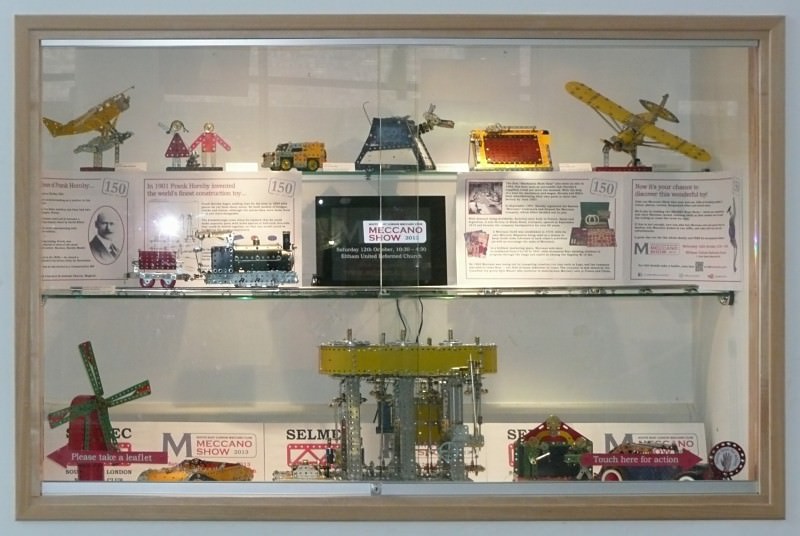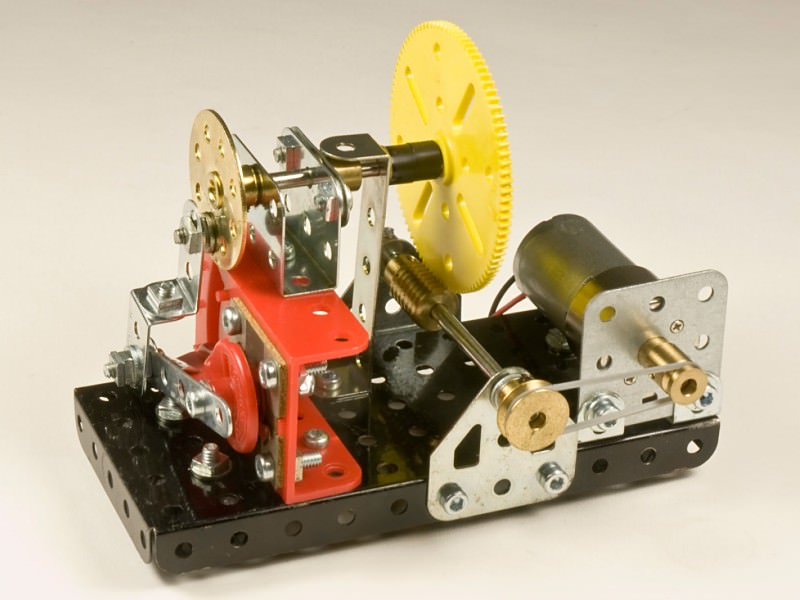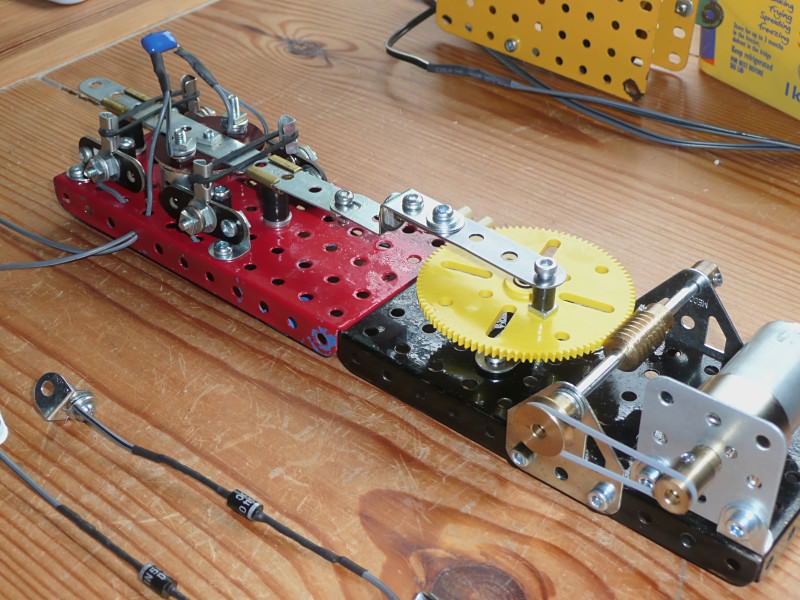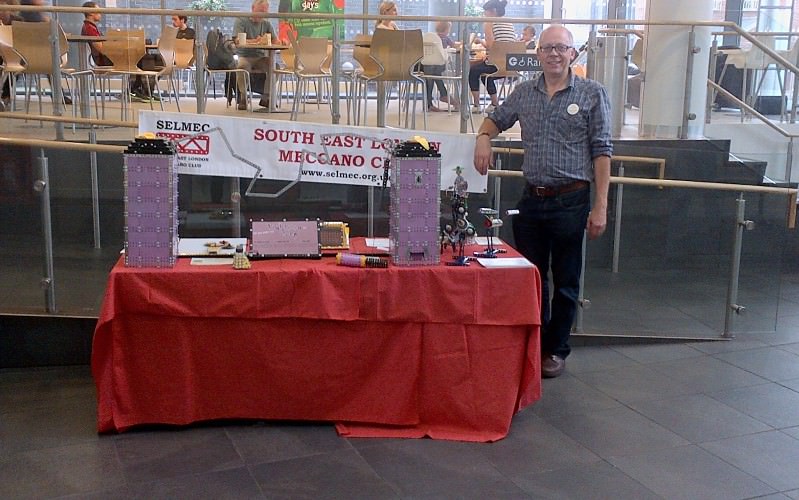Eltham Centre Display 2013
Report written by Ralph Laughton for our January 2014 Newsletter
Monday 2 September 2013 – Friday 4 October 2013
The Eltham Centre
Eltham
Most Meccano shows and exhibitions are visited, on the whole, by other Meccano enthusiasts. The SELMEC show is different. Thanks to Tim Surtell’s efforts at aiming his publicity outside the Meccano community, he has managed create a buzz in the local community. Our show now attracts hundreds of visitors every year. It is really good to see families attending with (or without!) children. A lot of this has to be put down to the display cabinet at the Eltham Centre that Tim has managed to secure the use of for the past two years. This year, the cabinet was reserved for our use during the whole month of September.
Working and static models were supplied by the following members:
A touch-pad situated at the bottom right-hand corner of the cabinet enabled visitors to activate the working models. These would run for a short period of time before stopping, thus adding movement without causing excessive wear to the models or their mechanisms.

The display cabinet
2013 is the 150th anniversary of Frank Hornby’s birth, and, to commemorate this, the display also featured a biography of the man who gave the world Meccano, Hornby Model Trains and Dinky Toys, along with a brief history of the Meccano company. To tie in with the Hornby theme, Chris Warrell’s locomotive and wagon were intended to chug back-and-forth automatically along a replica Hornby O Gauge track, purchased by Chris especially for the display. Getting this seemingly simple action to work reliably was quite a challenge.
Initially Tim had wired up a 3-pole relay as a latch and reversing switch. Microswitches positioned at each end of the track would be activated by the locomotive to turn the relay on and off. However, he didn’t reckon on the amount of current that a Meccano PDU inside a heavy model would consume, especially when said model is required to reverse abruptly at each end of the track. During testing at the Henley Gathering several people commented on the aroma of melting silicon in the air as the model fried one of the microchips on his Arduino-based control system!
Ralph Laughton proposed a different solution. If the centre rail is broken so as to electrically isolate the track at both ends, and diodes are wired across the gaps as shown below, then the locomotive will automatically stop when it passes over the gaps. Only when the motor is reversed will the locomotive continue in the opposite direction.
The reversing can be achieved mechanically, with a crank operating a Meccano reversing switch as shown below.

Meccano automatic reversing switch, Mk I
This leaves the control system with the simple task of switching a low-power motor on and off and has the advantage that the locomotive can be powered from a separate power supply to reduce electrical noise.
Ralph put together the reversing mechanism (based on a design by Chris Shute) and Tim supplied the diodes… problem solved! However, it soon became apparent that the Meccano reversing switch could not be trusted to work unattended — the wiper frequently shorted out against the mounting bolts and only has a tiny gap between its contacts in any case. Subsequently Ralph realised that substituting the original round-head slotted bolts with modern hex socket bolts was causing the problem with the switch — they are too big — so be warned!

Meccano automatic reversing switch, Mk II (with diodes in foreground)
Tim built his own reversing switch with large contacts well spaced apart, which could be driven by Ralph’s motor mechanism as shown above. This arrangement worked well and allowed them to finally get the locomotive moving. Litigation between these two intrepid builders, regarding the ownership of this mechanism is proceeding but reports are being received that harmony has been restored.
There were a few other issues with the display that were quickly resolved as they occurred — the driving bands in Adrian’s Performing Musicians perished and needed replacing, and his Windmill needed a quick adjustment to ensure its sails turned immediately as the display was set in motion.

Chris Warrell with our Meccano stand
The staff at the Eltham Centre have always been very enthusiastic about our displays, allowing club members to set up a stand in the foyer in addition to using the display cabinet. This year Tim and Chris Warrell manned the stand on Wednesday 25th September and Friday 4th October, demonstrating our models to the public and introducing many young people to a toy that they had never encountered before.